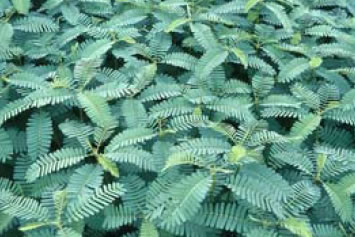Sesbania
What is sesbania
 Sesbania is a legume commonly used as a green manure crop to add nitrogen and organic matter to the soil. The most common species of sesbania used in Asia are Sesbania cannabina (former name acculeata), S. rostrata and S. cannabina (which produces nitrogen-fixing nodules in its roots). Sesbania rostrata (produces nitrogen-fixing nodules in both roots and stems) and is commonly found in Africa.
Sesbania is a legume commonly used as a green manure crop to add nitrogen and organic matter to the soil. The most common species of sesbania used in Asia are Sesbania cannabina (former name acculeata), S. rostrata and S. cannabina (which produces nitrogen-fixing nodules in its roots). Sesbania rostrata (produces nitrogen-fixing nodules in both roots and stems) and is commonly found in Africa.
Why use sesbania in rice
The organic matter and nitrogen produced by Sesbania help improve the soil and subsequent crop growth. Under some circumstances, growing green manures is a cheaper and renewable source of N, especially when inadequate infrastructure and transport mean that other sources of nutrients (e.g., fertilizer) are expensive or not delivered on time.
How do you manage sesbania in rice
Sesbania can produce up to 80−100 kg N/ha (equivalent to 4−5 t dry biomass of Sesbania per ha) in around 40 days during the long-day season and in 50−60 days during the short-day season.
- When to plant: Sesbania is planted before or after rice crop, when the land is vacant. Sesbania is highly photoperiod sensitive, flowering in about 35 days during the long-day season and in 125 days during short-day season.
- Temperature requirements: Sesbania grows best at temperatures above 25oC.
- Land preparation: While Sesbania can be grown with little tillage, more thorough land preparation (e.g., one ploughing and two or three harrowings) gives better crop establishment.
- Seed rate: Where weed populations are low, sesbania seeds can be broadcasted at a rate of 30 kg per ha before the onset of the rains. With land preparation and irrigation, the seeding rate can be reduced to 16 kg per ha. Seed usually weighs from 14 to 18 g per 1000 seed. To improve germination (up to 65%) and emergence, seeds can be immersed in water at 100oC for three seconds. Some farmers scarify the seeds (i.e., slightly split the seed coat) by simply pounding the sacks containing the seed.
- Irrigation: The crop does not need to have standing water, but irrigation water should be applied as necessary (e.g., if soil is cracking and sesbania leaves are being shed).
- Incorporation: After about 45−60 days, and before it becomes woody, incorporate the sesbania in one of several ways: e.g., chop the crop for easier ploughing. A faster and more efficient way is to knock over the standing crop of sesbania using for example an animal-drawn wooden plank, and then plough along the direction of the lodged crop. A hydrotiller used for tillage in deep mud, incorporates bulky biomass effectively. The high-speed cagewheel, with short triangular teeth, cuts the biomass into pieces before burying it into the puddled soil. If using the hydrotiller, the field should be water soaked for at least 48 h before the biomass is incorporated. For large-scale production, a four-wheel tractor fitted with a rototiller is the most efficient method.
- Seed production: Sesbania seeds can be produced by growing when the day lengths are shorter than 11 hrs. During these periods, sesbania flowers in 30 to 35 days and bears seed 30 days later. Seeds harvested during the rainy season are often of lower quality as they are often infested with pod borers. Seeds can also be produced on marginal lands and dikes or paddy bunds to reduce costs.
Limitations
Constraints of sesbania as a green manure include:
- Low seed production.
- Increased labor-requirements (e.g., for ploughing and incorporation of bulky biomass into the soil).
- Sesbania’s sensitivity to photoperiod.
- Insect problems.
- Competition with cash crops for land and water.







